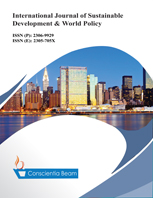New Evidence on the Link Between Income Inequality and Misery Index: A Nonlinear Time Series Analysis
Abstract
This paper investigates the relationship between the misery index and income inequality by estimating a nonlinear time series model in Iran from 1972 to 2011. Misery index, defined as the sum of the unemployment rate plus the annual rate of inflation. We showed that the dynamics of the mentioned relationship can be well approximated by a class of smooth transition autoregressive (STAR) models using the level of misery index as a transition variable. The findings indicated that by increasing misery index upper its threshold value, as counted 49.52, a strongly positive link is existed between two variables. However, any significant relationship was not confirmed for misery index in lower than 49.52.
Keywords:
Unemployment rate, Inflation rate, Misery index, Income inequality, Gini coefficient, Smooth transition autoregressive models (STAR)Published
2014-02-20
How to Cite
Sadeghi, S. K. ., Marvasti, M. B. ., & Karbor, R. . (2014). New Evidence on the Link Between Income Inequality and Misery Index: A Nonlinear Time Series Analysis. International Journal of Sustainable Development & World Policy, 3(1), 25–30. Retrieved from https://archive.conscientiabeam.com/index.php/26/article/view/2031
Issue
Section
Articles

